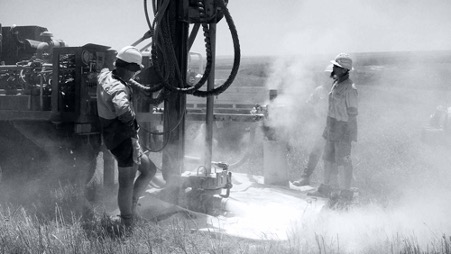iTech Minerals Ltd (ASX: ITM) has obtained recoveries of up to 86% TREO achieved in leaching trials undertaken by METS Engineering at its Caralue Bluff project in South Australia.
“The successful drilling programme in 2022 proved up a large Exploration Target of 110 – 220Mt @635 – 832ppm TREO and 19-22% Al2O3 at Caralue Bluff,” Managing Director, Mike Schwarz, said.
“However, our challenge was to improve the recovery process. Over the past few months, through our partnership with METS Engineering we have systematically explored all the processing options and uncovered the right conditions for exceptional Rare Earth Element recoveries.
“This has opened the path to creating a low cost and effective leaching process. While it is still early days, this has the potential to be an important breakthrough for the economics of the Caralue Bluff Prospect.”
Caralue Bluff Clay Hosted REE Prospect
The Caralue Prospect was initially established as a high purity kaolin prospect with the identification of thick intervals of bright white kaolin, close to surface, in several historical drill holes.
A 2022 drilling programme undertaken by iTech identified significant REEs, in the kaolin rich intervals, over a large area. The Caralue Bluff Prospect contains an Exploration Target of 110-220Mt @635-832ppm TREO and 19-22% Al2O3.
The Exploration target is based on 80 drill holes, from a total program of 260 holes, across an area of approximately 12km x 12km. Importantly it remains open in multiple directions allowing for possible expansion. REE mineralization is rich in key magnet REE’s (Nd-Pr-Dy-Tb) averaging 25% of the REE basket.
Metallurgy Results
A single composite sample from the 28 samples of ionic clay intervals was prepared from drill hole CBAC22-162 (10m @1157ppm TREO reported in August 2022.
Three HCl leaching tests were performed under comparable conditions (80°C for four hours, 20% pulp density) with different HCl concentrations used, namely 10%, 20% and 32%. Sub-samples of the leaching solution were taken at pre-determined intervals: 15, 30, 60, and 120 mins and these solutions were assayed.
At the end of the four-hour leaching test, the slurry was filtered, washed and dried. Both the filtrate and residue were also assayed.
The results show that 13 out of 15 rare earth elements can be leached using hydrochloric acid. Tm and Lu were not leached but, as they were present in the sample at the sub-ppm level, there is a level of uncertainty for this part of the results.
In test 1, REE extraction rates varied between 56% (Yb) to 83% (Sm and Gd), indicating a significant increase in extraction compared to the previous test wherein only 1M of HCl was used.
Further increasing the HCl concentration to 20% (Test 2), resulting in further increases in REE extractions achieving a recovery of above 80% for most REEs. Nd, Sm and Tb extractions were exceptional, achieving 90.22%, 91.60% and 92.41% respectively. However, a further increase in acid concentrations to 32% resulted in lower extractions.
Next Steps
Given the highly successful nature of these leaching results, future tests will include an investigation into optimal acid concentration, i.e. to achieve the highest recovery at minimum acid consumption. This will include exploring the effect of reducing acid concentration while adding sodium chloride to increase the ionic strength of the leachant.
Additionally, the viability of REE extraction by ion exchange desorption (IXD) will also be investigated as it has the potential to lead to a much lower reagent cost if successful.
The upcoming test work programs will perform:
• additional investigation of using NaCl and HCl as an alternative
• the ion exchange desorption (IXD) test using Ammonium Sulphate, Ammonia Acetate and Ammonia Citrate.
iTech Minerals will continue to undertake low level test work on the samples through our metallurgical consultants, METS Engineering, with the aim of developing a cost-efficient extraction method. This work will take up to four months.
If this can be done, we would need to test this method on a diverse set of samples from across Caralue Bluff, both geographically and within the regolith profile. We have already collected these samples in our previous drilling programme in 2022. Only if the new “potentially economic” method is effective would we restart on-ground exploration. While this work is being undertaken, we will continue to focus on our graphite projects and drilling program at the Lacroma Graphite Prospect.
For further information please visit: https://www.itechminerals.com.au/












